#big data analytics in healthcare
Text
Explore the transformative potential of big data analytics in healthcare from a new economy perspective. This insightful blog delves into the benefits and applications of big data analytics in the healthcare industry, including improved patient outcomes, personalized medicine, predictive analytics, and operational efficiency. Discover how harnessing the power of big data can drive innovation, enhance decision-making, and optimize healthcare delivery. Stay ahead of the curve and unlock the full potential of big data analytics in revolutionizing healthcare.
0 notes
Text
#Advanced analytics in healthcare#Predictive Analytics in Healthcare#Healthcare Data Analytics#Big Data in Healthcare#Big Data Analytics in Healthcare
0 notes
Link
#market research future#healthcare big data analytics#healthcare big data market#healthcare big data industry
0 notes
Text
Big Data Analytics in Healthcare Market is projected to reach $95.2 billion by 2030
the big data analytics in healthcare market is projected to reach $95.2 billion by 2030, at a CAGR of 13.8% during the forecast period. The rising adoption of EMR & EHR, increasing investments in the healthcare IT sector, and a shift from volume to value-based care are driving the growth of the big data analytics in healthcare market. However, IT infrastructural constraints in developing countries are expected to restrain the growth of this market. Growing preference for cloud-based analytics solutions is expected to offer significant growth opportunities for the big data analytics in healthcare market. Growing security concerns and a lack of skilled data professionals are challenging the market growth.
0 notes
Text
How Does Predictive Analytics in Healthcare Revolutionize Patient Care?
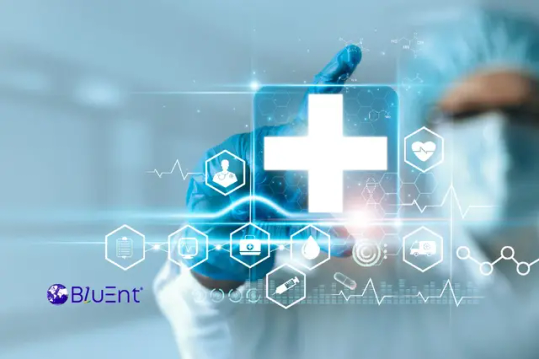
Predictive analytics in healthcare transforms how medical experts use data science services for precise medical diagnosis, patient health monitoring, general medicine and treatment, high-risk disease forecasts, and more.
Not just for patient care, medical specialists and researchers are using predictive AI to predict pandemic-like emergencies.
There is much more to delve into the role of predictive healthcare analytics and its benefits. If you're a healthcare group, a medical health officer, a healthcare researcher, or a chief medical analyst, this blog is a must-read for you.
As per the GlobeNewsWire's report, the worldwide healthcare predictive analytics market will grow at a CAGR of 22.23% to be valued at $30 billion by 2028.
For a long time, the medical community has been trying to organize their tremendous amounts of data and derive value from it for patient care. Now, with predictive analytics, there lies an opportunity to revolutionize the global healthcare industry.
What is Predictive Analytics in Healthcare?
The healthcare and medical industry has vast amounts of data.
From research papers and academic teachings to patient data and lab tests, big data insights and records offer many opportunities for modern computational tools to analyze and derive value.
0 notes
Text
Special Edition: Big Data in Healthcare
(Patreon Exclusive)
Become a member and watch the episode on Patreon!
The relevant blog post is titled The Impact of Big Data on Healthcare.
The blog post titled Big Data: Regulating Privacy and Security in Healthcare discusses this subject further.

View On WordPress
0 notes
Text
Unveiling a Healthcare Breakthrough: Global Healthcare Giant Saves $7.5 Million Annually with Intelligent & Unified Data Management
The pharmaceutical industry thrives on data, which plays a crucial role in every step, from clinical trials to regulatory compliance and drug development. However, amidst the vast amount of data generated daily, valuable insights often get lost in the maze of orphan files and dark data. Shockingly, research shows that 60–85% of unstructured data in shared storage setups remain in the dark.


Join us on their transformative journey, where they saved a staggering $7.5 million annually by reshaping their data landscape. Prepare to be inspired!
Click to read — https://bit.ly/3ISycK8
0 notes
Text
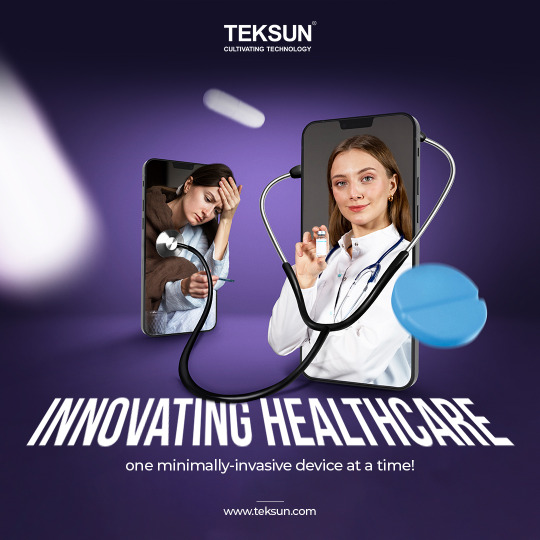
In healthcare, innovation will come from the value of AI solutions and their capacity for processing massive data sets that are far beyond the scope of human ability. To know more, visit @ https://teksun.com/solution/iot-air-conditioner-control-system/
#Artificial Intelligence#Healthcare Innovation#Medical Imaging#Electronic Health Records#Predictive Analytics#Machine Learning#Big Data#Wearable Technology#Healthcare Automation
0 notes
Text
25 Ways Healthcare Data is Revolutionizing the Healthcare Industry
An exhaustive list for healthcare and healthcareIT colleagues and friends. Happy Reading!
Healthcare data refers to the information collected from various sources in the healthcare system, including medical records, laboratory results, and insurance claims. This data can be used in numerous ways to advance healthcare and improve patient outcomes. From improving patient safety to developing personalized treatment plans, healthcare data is a valuable tool that can help healthcare…
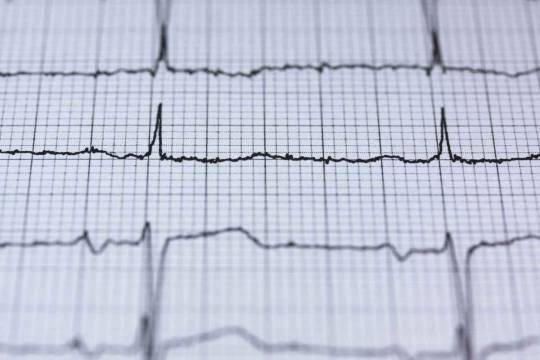
View On WordPress
#big data in healthcare#electronic health records#health data privacy#health data security#health information technology#healthcare AI#Healthcare Analytics#healthcare blockchain#healthcare data#healthcare data ethics#healthcare data governance#healthcare data integration#healthcare data mining#healthcare data storage#healthcare data visualization#healthcare data warehousing#Healthcare Interoperability#healthcare machine learning#medical informatics#patient outcomes#personalized medicine#Population Health Management#predictive analytics in healthcare#telemedicine#wearables in healthcare
1 note
·
View note
Text
#bigdataanalytics#healthcare#academicassignments#healthcareassignmenthelp#assignmentwritingservices#Top10 Examples Of Big Data Analytics In Healthcare - Academic Assignments
0 notes
Text
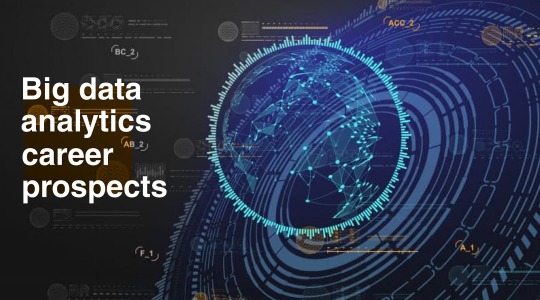
The field of two-year program data science is growing rapidly, and a PGDM in Big data analytics from Asia Pacific Institute prepares students for this industry.
Companies require Data analysts to manage big data, there is a high demand for skilled professionals in this field. A PGDM in Big data analytics from Asia Pacific Institute of Management offers a two-year program that trains students in various areas of data analytics, including healthcare management, Big data analytic, PGDM in marketing. With an AICTE approval, this program has a good placement record with an average package of 8.11 lakhs, and 80% of participating companies are MNCs.
0 notes
Link
#market research future#healthcare big data analytics#healthcare big data market#healthcare big data industry
0 notes
Text
Enhancing Immunity - Defending Against Social Engineering Attacks

Social engineering is a form of psychological manipulation used to gain access to confidential information or resources. This tactic is often used by criminals and hackers who use deception, manipulation, and influence tactics to exploit people’s trust in order to gain access to sensitive data in IT operations. Social engineering can be used for malicious purposes such as identity theft or financial fraud, or it can be used for more purposes such as marketing campaigns. In either case, social engineering relies on exploiting human psychology in order to achieve its goals.
Social engineering attacks are becoming more and more common as hackers become increasingly sophisticated. It is important for companies to understand the steps involved in a social engineering attack so that they can take steps to protect themselves from such threats.
Social engineering attacks involve manipulating people into revealing sensitive information or granting access to systems, networks, or physical premises. These attacks typically involve tricking people into giving out confidential information by exploiting their trust and lack of security knowledge. The attacker may also use physical means such as impersonation or tailgating to gain access to restricted areas.
In order to protect against social engineering attacks, it is important for companies to be aware of the steps involved in such an attack. This includes understanding how attackers use psychological tactics, how they exploit human weaknesses, and what measures can be taken to prevent such attacks from occurring.
Social engineering attacks are one of the most common cyber threats that organizations face today. These attacks use psychological manipulation and deception to gain access to sensitive information or resources. They can take many forms, including phishing emails, malicious links, and impersonation scams.
Awareness of Social Engineering Attacks
Validating the identity of the user with whom we are doing business
Checking for the authenticity of the attachments and the email we get in our inbox
Double-checking the content and legitimacy of the offers and discounts which are sent to us
Verifying the email address, domain, and social media profiles carefully when we get a message from the suspect
Preventing Social Engineering Attacks by Improvising IT Network Immunity
Use of Multifactor authentication adds one extra layer of the security
Adaptive authentication plays a key role in safe authentication
Having a strong password policy or password manager will ensure the user passwords are of not compromised easily
Defining the software access policies
Using desktop virtualization software to give you private, encrypted access to the network connection
Read more @ www.gavstech.com/enhancing-it-network-immunity-to-defend-against-social-engineering-attacks/
#ai in cyber defense#ai devops automation service tools#healthcare database software development#mobile app development#optimal clinical software development#digitaltransformationinhealthcareitconsulting#digital transformation in healthcare it consulting#digital transformation solutions#big data and predictive analytics in healthcare#global it services & solutions provider#robotic process automation coe#microsoft cloud solution provider#predictive analytics in healthcare#business process automation in healthcare
0 notes
Text
How Hospitals Can Use Data Analytics in Healthcare for Better Outcomes
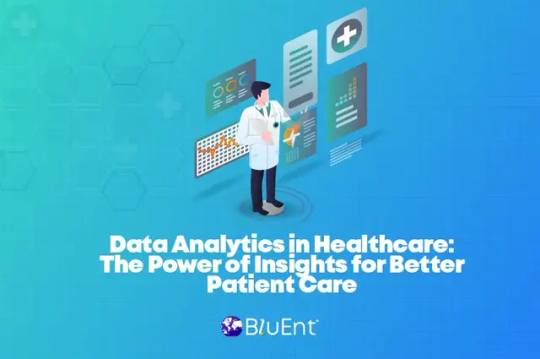
Data analytics in healthcare is one of the medical industry's driving forces, revolutionizing how patients are cared for. It can even reduce expenses and streamline internal and other medical processes at a corporate level.
The use of healthcare data analytics enables more individualized treatments, better decision-making, and patient well-being. Hospitals leveraging big data analytics and insights are more likely to get quicker and more precise findings to take accurate precautionary actions.
A recent report projected that the healthcare analytics market will reach 85.9 billion by 2027, growing at a CAGR of 25.7%.
Using data analytics, the medical industry can choose between treatments or surgeries and forecast the course of major health occurrences. With this, health experts can initiate long-standing plans based on data-driven reports and analyses that swiftly collect and deliver comprehensive & reliable data.
In this blog, we will give you an overview of big data analytics in healthcare and how it is used to improve outcomes in the healthcare industry.
Healthcare Analytics: Offering Real-Time Information
Data analytics in healthcare examines recent and past medical data to forecast developments and trends, enhance outreach, and control disease transmission.
It also involves the role of predictive analytics in healthcare to enhance the standard of patient care, medical data, diagnostics, company operations, and administration using micro and macro insights.
According to GrandViewResearch's study, healthcare analytics's current market size value is USD 43.1 billion, which will turn into USD 167.0 billion in 2030.
0 notes
Text
A Data-Driven Approach to Healthcare - Brain Injury and Disease Research

Cloud adoption & data pipeline automation in healthcare
Traditionally, healthcare advancements have progressed slowly due to siloed research and delayed results. However, with cloud application modernization, all that is changing for good. A unique collaboration between life sciences organizations and digital solution providers is offering an unprecedented level of insight into managing conditions and achieving optimal patient outcomes. Cloud modernization is expanding healthcare organizations’ ability to use data pipeline automation to effectively diagnose patients.
A prime example of cloud adoption is a nonprofit research organization dedicated to biomedical research and technology. The organization has been instrumental in facilitating advances in brain injury and disease research through its launch of the first cloud-based and interactive platform that supports information and idea exchange to further progress in neuroscience research. It uses big data to promote computational innovation discovery in brain diseases.
Co-created by Hitachi and other partners, this platform is a trusted portal where clinical researchers, physicians, and organizations can collaborate on research and the validation of emerging therapeutics.

The context of merging human and artificial intelligence for analyzing health data
Medical research data is becoming siloed, diverse, and complex. To break this complexity, a robust IT infrastructure with the capacity to aggregate data across multiple studies is required along with harnessing patients’ data to improve the healthcare system.
The organization needed an interactive and scalable platform that would be capable of integrating diverse cohorts and investigators and equipped with a high computing speed that is essential in machine learning and artificial intelligence applications.
These new capabilities would empower users to gain a comprehensive understanding of signature patterns within existing and emerging large-scale datasets and to foster collaboration to promote the efficient use of the research community’s collective knowledge of brain injuries and diseases.
With time, the organization recognized that meeting these challenges would require the expertise of specialists in data pipeline automation and healthcare data solutions to meet the steep requirements of the healthcare industry. Having heard of Hitachi, the organization turned to us for our Cloud Managed Services.
Leveraging healthcare data analytics solutions to build more sophisticated infrastructure
The organization wanted to collaborate with Hitachi to upgrade the user interface and augment the platform’s experience for researchers and the virtual analytical environment to ensure secure data management.
Hitachi was able to deliver an integrated solution that encompassed each component of the build-out. This streamlined project management made the process more efficient and data-driven healthcare innovation helped to further modernize, streamline, and simplify the health diagnostic system for the research organization.

Infrastructure that enables innovation
Cloud modernization was central to helping the organization maximize value in its transformation journey and boost the lives of people. While the organization began with a vision, advances in cloud-based data management, storage, and security brought that to fruition. The interactive platform now allows the organization to leverage best practices to tap into the potency of data pipeline automation and utilization.
Hitachi’s commitment to social innovation
For Hitachi, this project has particular resonance because it is aligned with its commitment to social innovation. To have played a role in accelerating this process and in bringing life-changing drugs and therapies to patients more quickly is always rewarding.
Discover how Hitachi is unlocking value for society with Social Innovation and Digital Transformation in Healthcare :
#advanced healthcare analytics#application modernization services#big data storage#brain disease research#brain injury research#cloud adoption healthcare#cloud modernization#cloud application modernization#data driven healthcare#healthcare analytics solutions#healthcare data analytics#healthcare data infrastructure#healthcare data intelligence#healthcare data management#benefits of cloud computing in healthcare
0 notes
Text
Unleashing the Power of Machine Learning in the 21st Century
Machine learning is one of the most talked about and rapidly growing fields in the tech industry. It is a branch of artificial intelligence that allows computers to learn and make predictions or decisions without explicit programming. The rise of big data and the increasing availability of computing power have made it possible for machine learning algorithms to handle vast amounts of data and provide valuable insights and predictions.
In recent years, machine learning has been applied in various industries, ranging from healthcare to finance, retail, and marketing. In healthcare, machine learning algorithms are used to analyze patient data and help doctors make more accurate diagnoses. In finance, machine learning is used to detect fraud, analyze financial markets, and make investment decisions. In retail, machine learning is used to personalize shopping experiences, recommend products, and optimize pricing.
One of the key benefits of machine learning is that it allows for automated decision-making, which can save time and resources. Machine learning algorithms can analyze large amounts of data and provide insights in real-time, enabling organizations to make data-driven decisions more efficiently. Additionally, machine learning algorithms are able to improve over time, becoming more accurate as they are exposed to more data.
Despite its many advantages, machine learning is not without its challenges. One of the main challenges is the lack of transparency in decision-making. It can be difficult to understand how machine learning algorithms arrived at a particular decision, making it difficult to explain the decision to stakeholders. Additionally, machine learning algorithms can be biased if the data used to train them is biased, leading to unfair or inaccurate decisions.
In conclusion, machine learning is a powerful tool that has the potential to transform the way we live and work. As the technology continues to evolve and improve, we can expect to see more and more applications of machine learning in various industries. However, it is important to approach machine learning with caution and ensure that the algorithms are developed and used in a transparent and ethical manner.
#Machine Learning#Artificial Intelligence#Data Science#Predictive Modeling#Deep Learning#Neural Networks#Natural Language Processing#Image Recognition#Predictive Analytics#Big Data#Supervised Learning#Unsupervised Learning#Reinforcement Learning#Predictive Maintenance#Recommender Systems#Fraud Detection#Predictive Marketing#Healthcare AI#Computer Vision#Predictive Sales#Predictive Quality Control#Predictive Logistics
0 notes